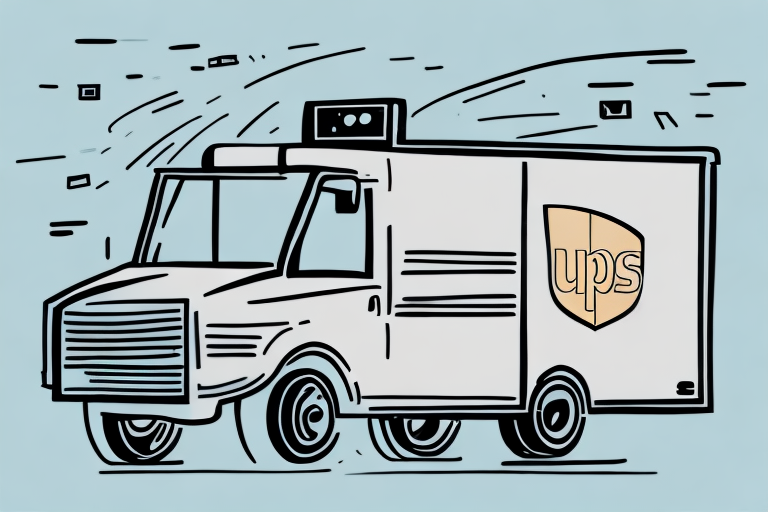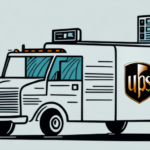Understanding the UPS Chargeback Standard
UPS is one of the most commonly used carriers for e-commerce businesses. However, it is not uncommon for them to charge businesses with what is known as a UPS chargeback. This can lead to additional expenses and even harm the reputation of the business. Therefore, it is important to understand what UPS chargebacks are, when and why they occur, and how businesses can avoid them.
What is a UPS Chargeback and When Does it Happen?
A UPS chargeback is a fee charged to a business when a shipment does not meet the carrier’s requirements. This can happen for a variety of reasons, including incorrect package weight, inaccurate shipping address, damaged or missing packages, and other similar issues. Chargebacks can also occur if the shipment was not delivered on time or if it was not processed correctly. In other words, if the carrier has to take any additional steps to complete the shipment, chargeback fees may apply.
It is important for businesses to understand the reasons behind UPS chargebacks and take steps to avoid them. One way to prevent chargebacks is to ensure that all packages are accurately weighed and measured before shipping. Additionally, businesses should double-check shipping addresses to ensure that they are correct and up-to-date. Proper packaging is crucial to prevent damage during transit. By taking these steps, businesses can avoid unnecessary chargeback fees and ensure that their shipments are delivered on time and in good condition.
The Impact of UPS Chargebacks on E-commerce Businesses
For e-commerce businesses, UPS chargebacks can have a significant impact on the bottom line. These fees can quickly add up and create a financial burden on the business. Additionally, chargebacks can harm the business's reputation by causing delays in shipments, leading to unhappy customers, and potentially damaging reviews on social media and other online platforms.
- Financial Strain: Accumulating chargeback fees can erode profit margins.
- Reputation Damage: Delayed or mishandled shipments can result in negative customer reviews.
- Operational Challenges: Frequent chargebacks may indicate underlying issues in shipping processes.
Implementing proper shipping procedures, using high-quality packaging materials, and monitoring transactions for signs of fraud can significantly reduce the likelihood of chargebacks and protect the business’s financial health.
How to Avoid UPS Chargebacks and Reduce Costs
The best way to avoid UPS chargeback fees and reduce costs is to ensure that all shipments are processed correctly and meet the carrier's requirements. This includes:
- Accurately measuring package weight and dimensions
- Confirming shipping addresses
- Packing shipments appropriately
Businesses can also utilize UPS’s technology tools to verify shipping data and track packages effectively. Clear communication with customers about shipping expectations and delivery times can help prevent disputes and delays that may result in chargebacks.
Additionally, businesses can consider negotiating rates with UPS or exploring alternative shipping options to reduce costs. Staying up-to-date on UPS policies and procedures is crucial, as these may change over time. Regularly reviewing shipping practices and making necessary adjustments ensures compliance with UPS requirements and helps avoid chargebacks.
Common Reasons for UPS Chargebacks and How to Address Them
Understanding the common reasons for UPS chargebacks allows businesses to proactively address potential issues:
- Incorrect Package Weight: Utilize accurate weighing equipment to ensure each package is properly measured.
- Incorrect Address: Verify that all shipping information is accurate and up-to-date to prevent delivery errors.
- Late Delivery: Use expedited shipping options during peak seasons and communicate potential delays to customers.
- Damaged or Missing Packages: Invest in high-quality packaging materials and ensure proper handling during transit.
By addressing these issues, businesses can significantly reduce the occurrence of chargebacks and the associated costs.
Best Practices for Managing and Tracking UPS Shipments
Effective management and tracking of UPS shipments are essential to avoid chargebacks. Implement the following best practices:
- Utilize UPS’s tracking and visibility technology to monitor shipments in real-time.
- Ensure all packages are properly labeled with accurate shipping information.
- Use correct shipping labels and secure packaging materials to prevent damage.
- Maintain comprehensive records of all shipping data to identify and resolve any issues promptly.
By closely monitoring shipments and maintaining detailed records, businesses can quickly address any problems and avoid additional fees.
How to Dispute a UPS Chargeback and Win
If a UPS chargeback fee is issued incorrectly, businesses can dispute it to potentially have the fee removed. Steps to successfully dispute a chargeback include:
- Gathering evidence that the shipment met UPS’s requirements, such as weight measurements, proof of delivery, and shipping labels.
- Submitting a formal dispute with all supporting documentation to UPS.
- Reviewing internal processes to ensure that similar issues do not recur in the future.
By presenting clear and comprehensive evidence, businesses increase the likelihood of having the chargeback fee removed.
The Importance of Accurate Shipping Data in Preventing UPS Chargebacks
Accurate shipping data is crucial in preventing UPS chargebacks. Ensure the following:
- Correct package weight and dimensions
- Accurate and up-to-date shipping addresses
- Proper declaration of package contents and value
Utilizing UPS’s technology tools and manually verifying shipping information can help prevent inaccuracies that lead to chargebacks. Additionally, proper packaging using appropriate materials and adhering to UPS’s guidelines for shipping hazardous materials are essential to avoid costly chargebacks and potential legal issues.
The Future of UPS Chargebacks in the E-commerce Industry
The e-commerce industry is continuously evolving, and UPS chargeback standards are likely to change accordingly. Key trends that may influence future UPS chargeback policies include:
- Environmental Sustainability: As consumers demand more eco-friendly shipping practices, UPS may implement chargeback policies that incentivize sustainable shipping options.
- Advanced Shipping Technologies: The rise of drone delivery and autonomous vehicles could disrupt traditional shipping methods, necessitating new chargeback policies.
- Increased Automation: Enhanced automation in shipping processes may reduce errors and, consequently, chargebacks.
E-commerce businesses must stay informed about these developments and adjust their shipping strategies to remain compliant and avoid potential chargebacks.
Analyzing the Financial Impact of UPS Chargebacks on Your Business
Understanding the financial impact of UPS chargebacks is essential for businesses to make informed decisions about their shipping operations. Steps to analyze this impact include:
- Tracking the number of chargebacks over time and calculating the total cost.
- Identifying trends and patterns in shipping operations that contribute to chargebacks.
- Comparing the cost of chargebacks to the cost of implementing new shipping strategies or technologies aimed at reducing chargebacks.
This analysis helps businesses determine the most effective measures to avoid chargebacks and improve their overall shipping efficiency.
How Technology Can Help You Stay Compliant with UPS Standards
Leveraging technology tools and software can help businesses stay compliant with UPS chargeback standards. Benefits include:
- Quickly identifying and addressing shipment issues through automated alerts.
- Tracking and verifying shipping data to ensure all shipments meet UPS requirements.
- Integrating with UPS systems to automatically check for errors or discrepancies in shipping information.
For example, using shipping software that integrates with UPS can automatically verify shipping details, reducing the risk of chargebacks caused by incorrect or incomplete information.
Tips for Negotiating with UPS on Chargeback Claims
If your business is facing a UPS chargeback fee, it is possible to negotiate the fee directly with UPS. Effective negotiation strategies include:
- Presenting evidence that the shipment met the carrier’s requirements.
- Demonstrating a history of compliance with UPS standards.
- Proposing solutions to prevent similar issues in the future.
Additionally, implementing best practices such as proper packaging, accurate labeling, and clear communication with customers can reduce the likelihood of facing chargeback fees and the need to negotiate with UPS.
Understanding the Different Types of UPS Chargebacks and Their Causes
UPS chargebacks can be categorized based on their specific causes. Common types include:
- Incorrect Package Weight: Resulting from inaccurate measurements during the shipping process.
- Incorrect Shipping Addresses: Leading to delivery failures and additional handling by UPS.
- Missing or Damaged Packages: Caused by inadequate packaging or mishandling during transit.
- Late Deliveries: Occurring when packages are not delivered within the guaranteed timeframe.
Understanding these types helps businesses identify potential weaknesses in their shipping processes and take proactive measures to address them.
Late deliveries can be triggered by factors such as adverse weather conditions, transportation delays, or incorrect routing. To mitigate this, businesses should monitor shipments closely, communicate with shipping providers, and utilize expedited shipping options when necessary.
Case Studies: Real-Life Examples of Businesses Affected by UPS Chargebacks
Examining real-life examples provides valuable insights into how UPS chargebacks can impact businesses and the measures taken to resolve them:
- Case Study 1: An e-commerce retailer faced frequent chargebacks due to incorrect package weights. By investing in precise weighing scales and training staff, they reduced chargebacks by 80%.
- Case Study 2: A subscription box service experienced delays caused by inaccurate shipping addresses. Implementing an address verification system reduced late deliveries and improved customer satisfaction.
- Case Study 3: A tech gadget seller dealt with damaged packages due to inadequate packaging. Upgrading packaging materials and partnering with reliable carriers minimized damage-related chargebacks.
These examples highlight the importance of accurate shipping practices and the positive outcomes of addressing chargeback causes proactively.
In conclusion, understanding the UPS chargeback standard is essential for any e-commerce business that relies on this shipping carrier. By taking steps to avoid additional fees, such as accurately measuring package weight, monitoring shipments closely, and utilizing technology tools, businesses can improve their shipping operations and prevent potential harm to their reputation.




















